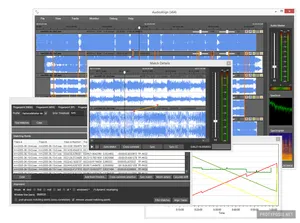Aurio adds support for realtime live fingerprinting and cross-plattform cloud deployments with .NET Core 2.0

A collaboration with eyecandylab, a company developing products for augmenting TV programs, recently gave me the opportunity to implement great new features into Aurio. The most recent version released today extends the architecture to support processing of real-time audio streams with infinite lengths, which means that live streams can now be fingerprinted on the fly with minimal latency. Additionally, the Aurio core library has been ported to .NET Standard 2.0 and will run with the .NET Core 2.0 framework on Windows, Linux and MacOS, enabling building microservices in containerized environments like Docker.
An example application named Aurio.Test.RealtimeFingerprinting has been added to demonstrate how real-time live fingerprinting can be implemented with only a few lines of code. As part of supporting .NET Core, resampler and FFT dependencies building on native code have been moved from the core into optional add-on packages, and the WDL resampler ported to purely managed .NET code by NAudio has been integrated as an alternative for deployments where native dependencies are undesired. This means that now there are purely managed implementations available for both FFT (Exocortex.DSP with Aurio.Exocortex) and resampling (NAudioWdlResampler within the Aurio core).
Of course Aurio continues to support the good old WPF GUI applications, but the framework requirement had to be increased from .NET Framework 4.0 to 4.6.2. AudioAlign has also been updated to the latest Aurio version.


